

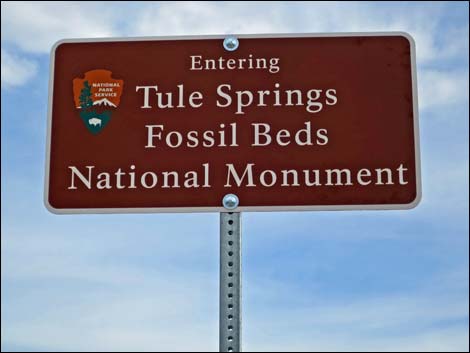 |
Overview Tule Springs Fossil Beds National Monument is a new National Park Service area that was designated in December 2014 and encompasses about 22,600 acres. The Monument stretches some 43 miles from the north side of Las Vegas northwest along Highway 95 to the edge of the Nellis Bombing Range. At the widest point, it is about 7 miles across, although much of it is fairly narrow, with the narrowest point being about 1-mile wide. In 2017, Nevada established a new state park on about 320 acres of state land that is surrounded on three side by the National Monument. Ice Age Fossils State Park now hosts a visitor center for the entire area. Link to Map of Tule Springs Fossil Beds National Monument. Tule Springs Fossil Beds National Monument was established to protect paleontological resources that span the last 250,000 years, including the last two Ice Ages. Entombed in ancient muds are the fossilized remains of Columbian Mammoth, Camelops (related to Bactrian Camels), American Lions, three species of Extinct Horses, and Ground Sloths. |
 Hiker in Tule Springs Fossil Beds National Monument |
At present, developed recreational opportunities in the National Monument are limited, but people are welcome to enter anywhere and walk about the area. Please look, but do not touch the fossils. The State Park has three developed trails and a visitor center with educational displays. One nice thing about Tule Springs is that it is close to the urban area, and therefore access is easy. In fact, Tule Springs made Expedia's list of America's Top Dinosaur Destinations. The article is a bit goofy, but it is still nice to recognized. Tule Springs has no dinosaur fossils, but Red Rock Canyon National Conservation Area and Gold Butte National Monument both have dinosaur tracks, so they might be down there somewhere. Administration The National Monument is administered by the National Park Service. The Protectors of Tule Springs, a citizen's advocacy group, has spearheaded on-the-ground efforts to care for and protect the area. The State Park is administered by Nevada. |
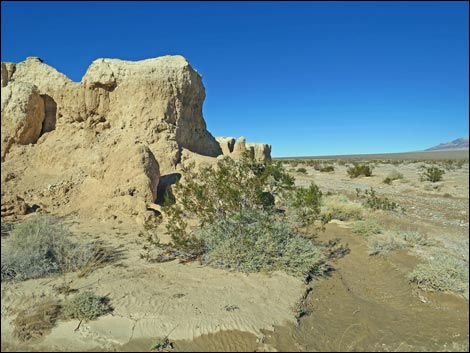 |
Activities For the public, currently the only activities are hiking in the desert and visiting the State Park Visitor Center (with a museum gallery). For paleontologists, there is lots of excavation to be done. The Protectors of Tule Springs lead walks into the fossil areas, so visit their website for information and the schedule. Geology At the peak of the last Ice Age, roughly 25,000 years ago, the Tule Springs area was wet and green, and marshlands trapped and held dust that now forms extensive mud hills in various shades of gray and yellow. The wet muds also covered dead animals, the bones of which can be found in the mudhills. Tule Springs generally lies in the Upper Las Vegas Wash area. This is along the base of the Las Vegas Range and the Sheep Range to the north and east, and the Spring Mountains to the west. As such, the landscape is yellow mud hills interspersed with gray limestone alluvium. This area is the Las Vegas Shear Zone, but fortunately fault activity has not greatly disturbed the surface in the last 250,000 years. |
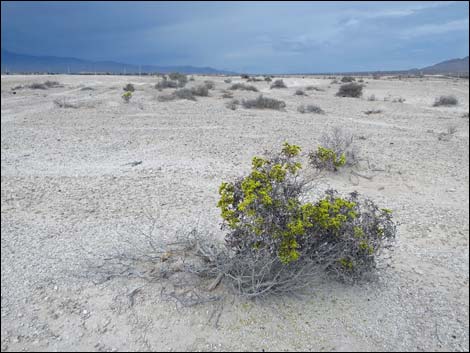 Rare plant: Las Vegas Buckwheat |
Vegetation Vegetation in Tule Springs Fossil Beds National Monument is typical of the interface between lower elevation Creosote-Bursage Flats and middle-elevation Mojave Desert Scrub. As such, Creosote Bush and White Bursage and a scattering of Mojave Yucca visually dominate the landscape. At the northwest end of the Monument, Shadscale Saltbush covers large areas. Other shrubs include Desert Globemallow, Nevada Jointfir, Matchweed, and Beavertail Cactus, and nice stands of Desert Princesplume can also be found. On the mud hills, however, few species grow well, leaving large spaces open and barren, but with the occasional Las Vegas Bearpoppy, Desert Bearpoppy, and Las Vegas Buckwheat dotting the area. |
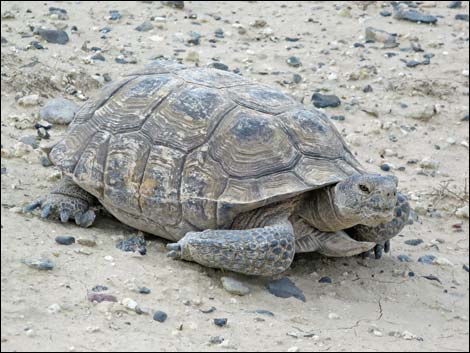 Desert Tortoise in Tule Springs |
Wildlife While the original marshlands supported herds of This lower-elevation area does not generally support large animals, but mule deer and bighorn sheep traverse the area when moving between mountain ranges. Other large species, such as coyote and bobcat, are present, but not often seen. Many species of small mammals, reptiles, and birds inhabit the area. Most of the "snake holes" were made by harmless kangaroo rats. There are a few snakes, but they are rarely seen. Please respect the snakes; they lived here first. Desert tortoises are uncommon. The common lizards are side-blotched lizards and western whiptails. There are many species of birds. The most conspicuous species include Northern Mockingbirds and House Finches, but birds ranging from hawks to hummingbirds can be found in the Monument. |
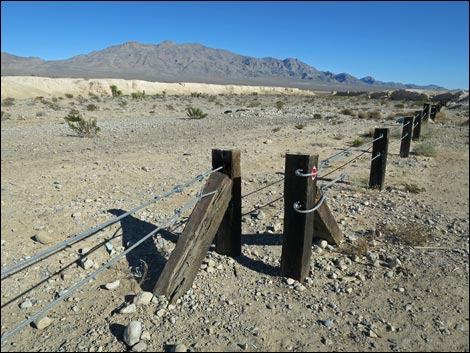 Durango Drive trailhead access (view ENE) |
Getting to Tule Springs Fossil Beds National Monument Link to map. The Monument lies along the north edge of the Las Vegas Valley and abuts private and public lands all along the edge. As such, almost any road that reaches desert lands along the north edge of town provides access. Perhaps the most convenient access points are North 5th Street at the east end, Decatur Blvd and the Shooting Park Road in the center-east, Floyd Lamb Park and Durango Drive in the center-west, and Corn Creek Road at the north end. The State Park is located on North Decatur Blvd (8660 N Decatur Blvd). Camping There is no camping at Tule Springs. The nearest designated camping is in Red Rock Canyon National Conservation Area, the Spring Mountains National Recreation Area, and Lake Mead National Recreation Area. Dispersed camping is available in Desert National Wildlife Range. |
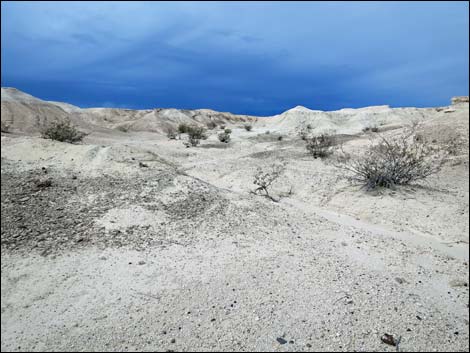 Mud hills |
Lodging, Dining, and other Facilities As of now, there are no Lodging, Dining, or similar facilities in Tule Springs. However, there is a plethora of such facilities nearby in town. Hours There are no "hours," per se, in the National Monument, but the area should be considered day use only. The State Park is open Wednesday to Sunday, from 8:00am to 4:30pm. Entrance Fees There are no fees in the National Monument, but the State Park charges $3 per person aged 13 and up. Watch Out Other than the standard warnings about hiking in the desert, this area has a long history of use and abuse by visitors, so be careful of broken glass in shooting areas (also lead-contaminated soils) and avoid trash dumps. I know of no other special hazards, but keep in mind that this is an undeveloped area, so you are on your own. In case of emergency, call 911. |
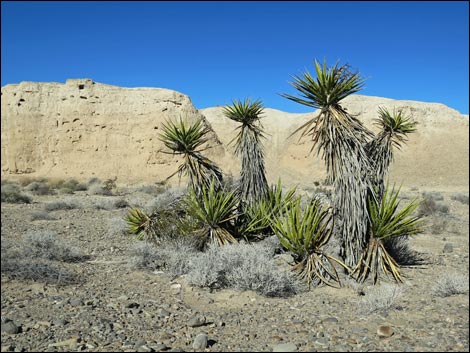 Mojave Yucca and mud hills |
Some Rules and Regulations Tule Springs Fossil Beds National Monument is a National Park Service area, so all rules and regulations appropriate in a national park apply. State Park rules are even more restrictive. In particular, do not collect or otherwise disturb plants, rocks, fossils, or artifacts, and do not disturb the wildlife. Pack it in, pack it out. No off-road driving. Pets must be on a leash (six-foot maximum) and under your physical control at all times. Never leave your pet in a vehicle because temperatures inside a car parked in the sun can exceed 120 degrees in just a few minutes, quickly cooking your pet (ditto for kids). FOR MORE INFORMATION Contact the Protectors of Tule Springs via their website. |
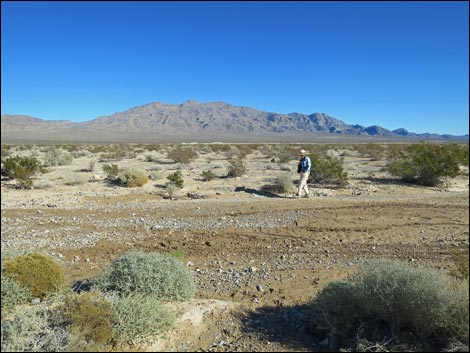 Hiker in Tule Springs Fossil Beds National Monument |
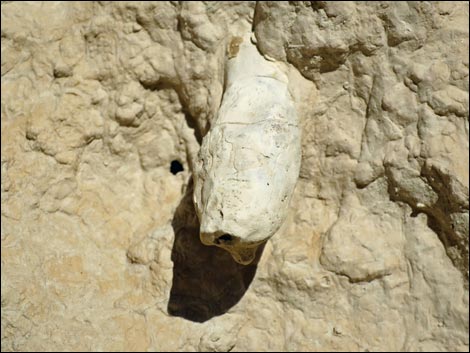 Fossil eroding out of the yellow muds |
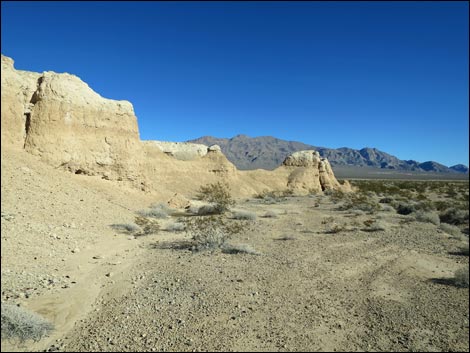 |
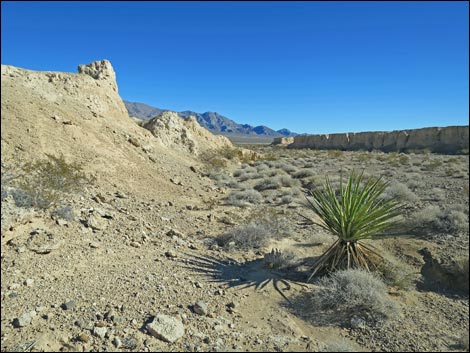 |
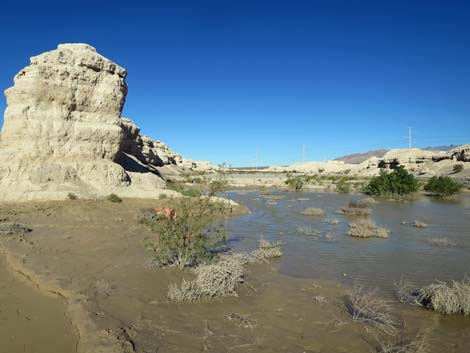 Seasonal floodwaters after heavy rains |
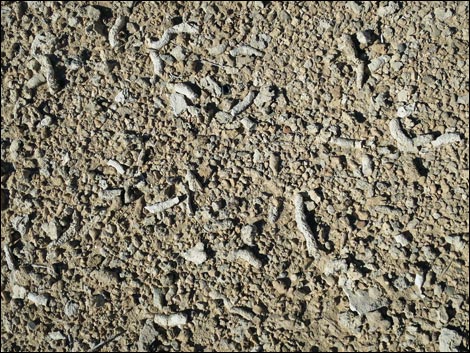 Trace fossils (fossilized animal burrows) litter the ground |
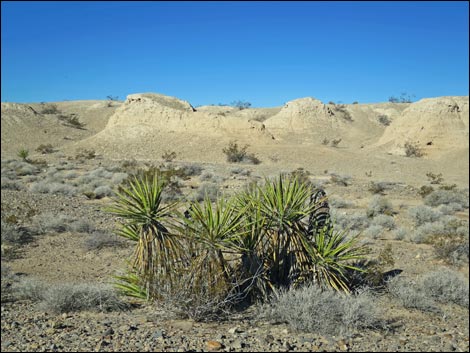 |
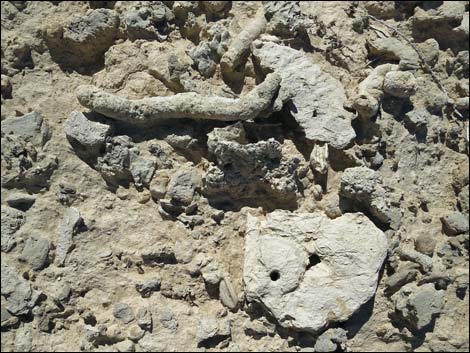 |
 |
 |
 |
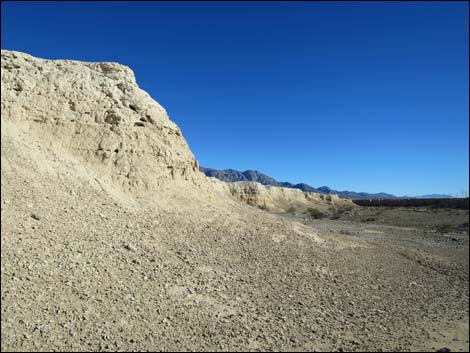 |
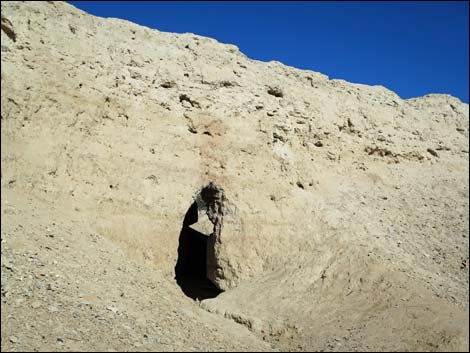 |
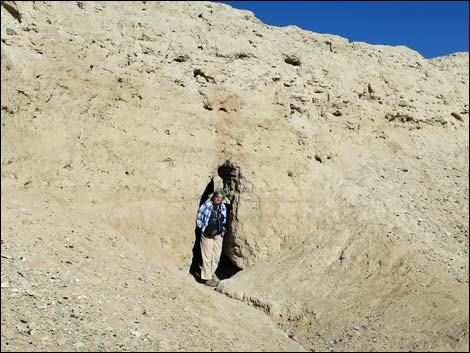 |
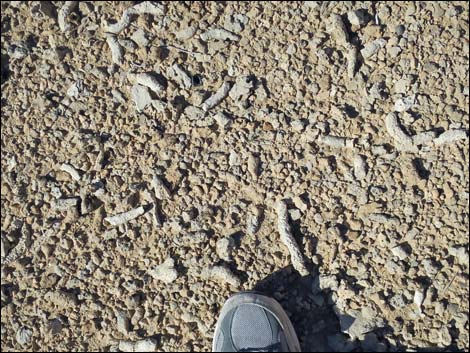 |
 |
 |
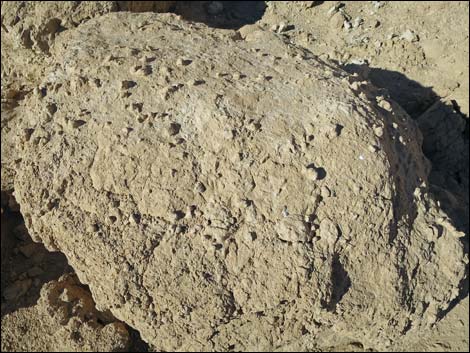 |
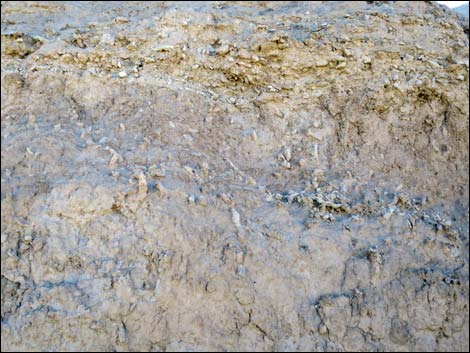 |
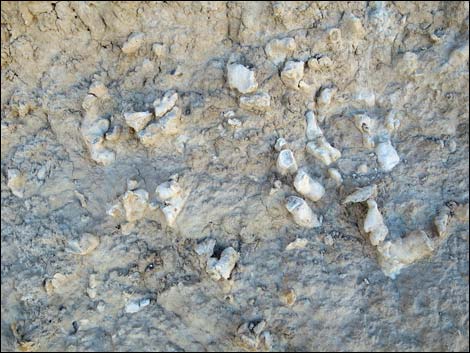 |
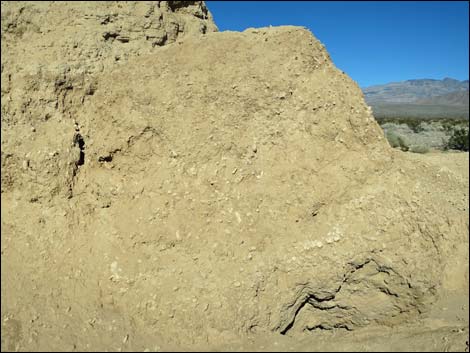 |
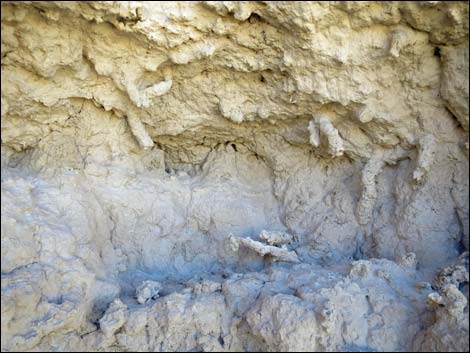 |
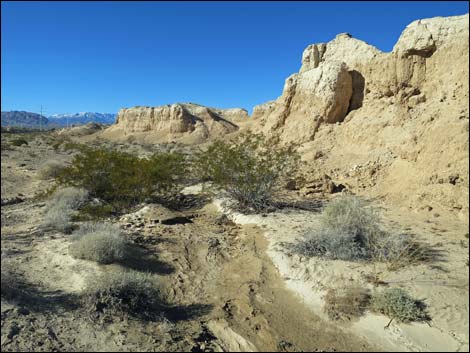 |
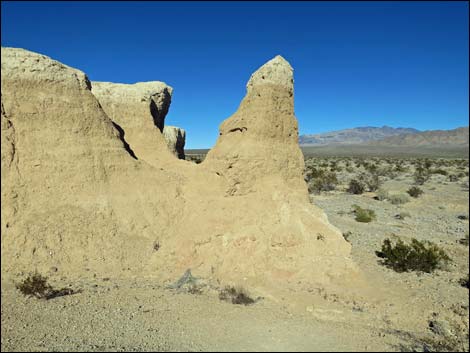 |
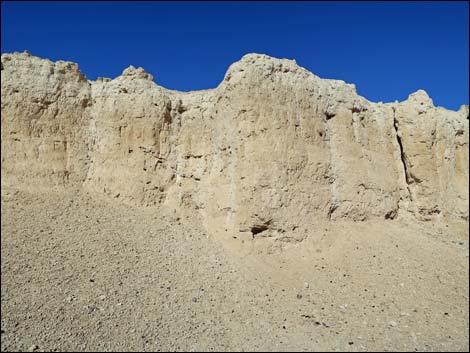 |
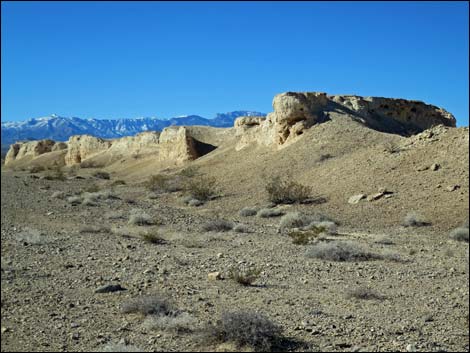 |
 |
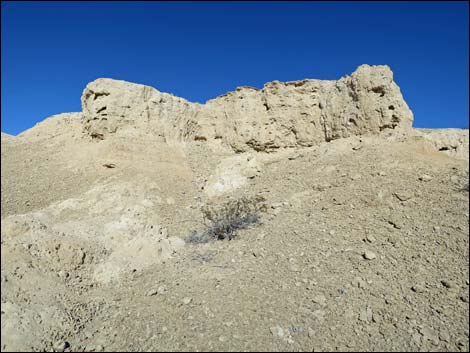 |
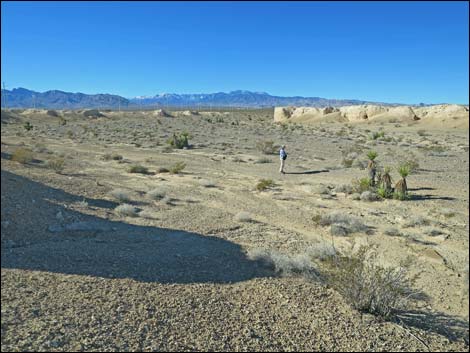 |
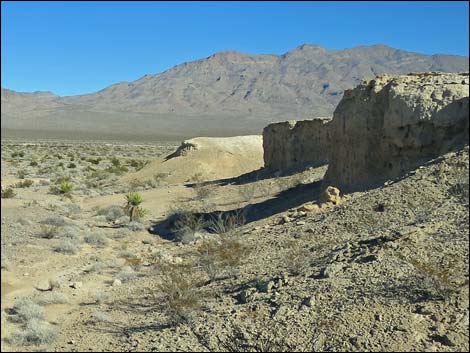 |
 |
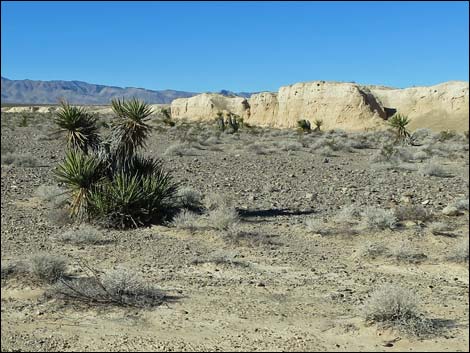 |
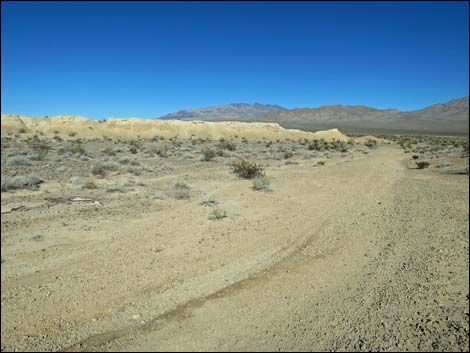 |
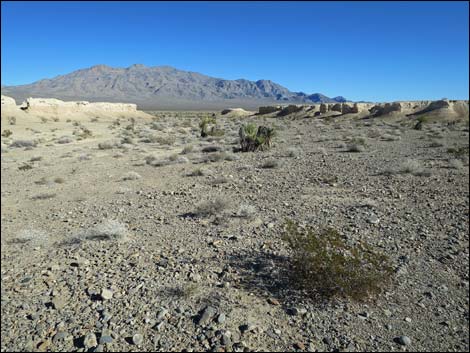 |
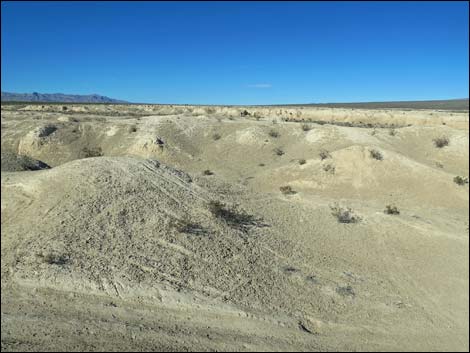 |
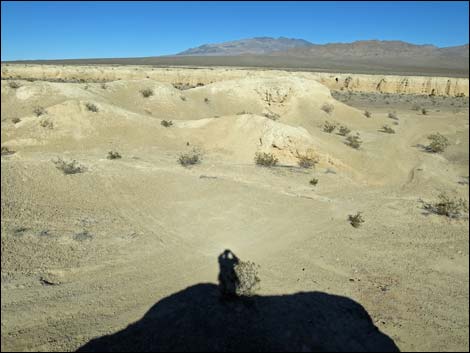 |
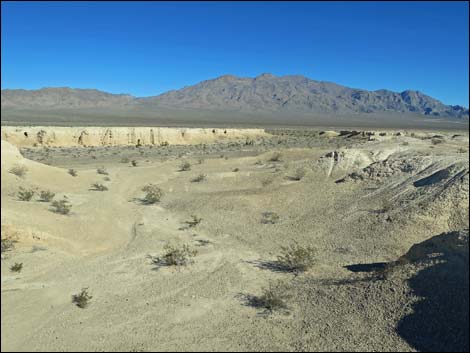 |
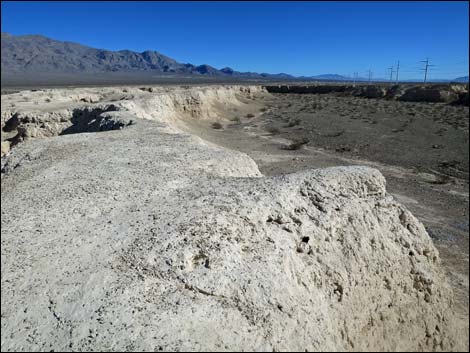 |
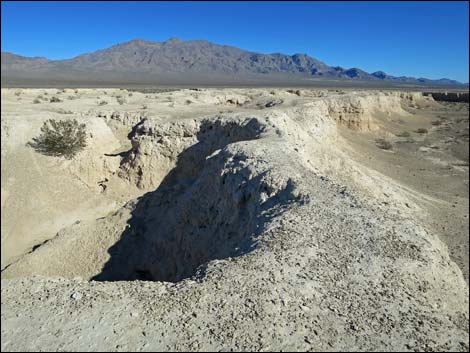 |
 |
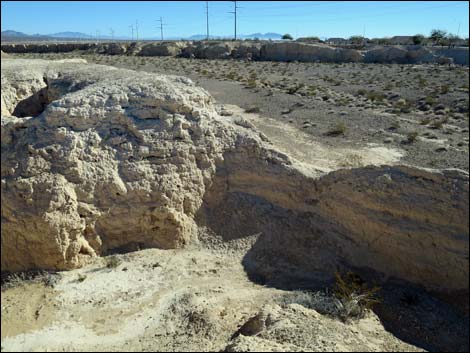 Interesting erosion patterns Interesting erosion patterns |
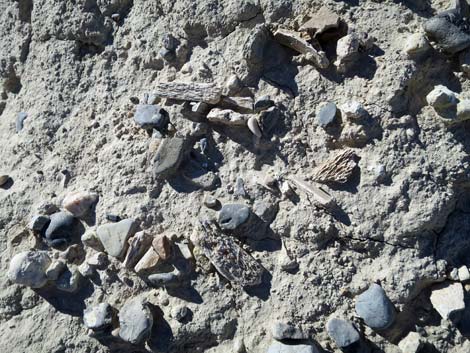 Bone fragments and stones on the ground |
 Tufa tubes on the surface |
 Tufa tubes on the surface |
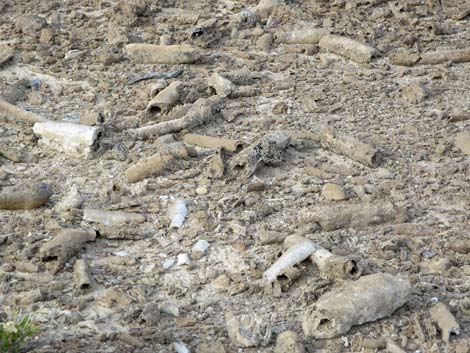 Tufa tubes |
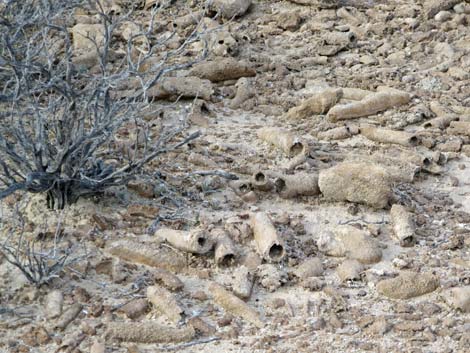 Tufa tubes |
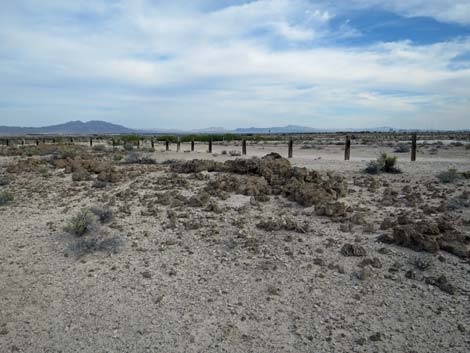 Tufa on the surface reveals race of an ancient stream bed |
 White mud hills |
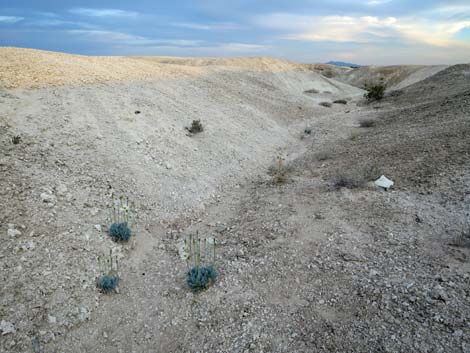 Desert (White) Bearpoppies |
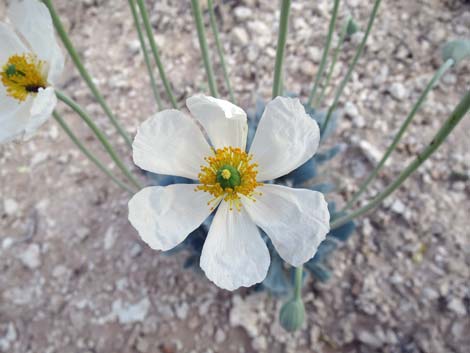 Desert (White) Bearpoppy flower |
Happy hiking! All distances, elevations, and other facts are approximate.
![]() ; Last updated 250207
; Last updated 250207
| Birding Around Las Vegas | Hiking Around Las Vegas | Glossary | Copyright, Conditions, Disclaimer | Home |